From Pacific Journalism Review
Reviewed by David Robie
Merdeka and the Morning Star: Civil resistance in West Papua, by Jason MacLeod. St Lucia: University of Queensland Press. 2015. 284 pp. ISBN 978-0-7022-5376-8
FIVE years ago the Pacific Media Centre and Pacific Media Watch published a “state of media freedom report” – the first such documentation in the Pacific region – and the most devastating section was about West Papua (Perrottet & Robie, 2011, 2012). The harrowing account of human rights violations forces and abuses of freedom of speech by the Indonesian military and security forces eclipsed comparable reports from the Pacific, including Fiji which was at the time a cause célèbre for free press champions.
The theme of this report echoed many articles I have written over the years highlighting the “black or blind spot” demonstrated by New Zealand media neglect of covering West Papua and the self-determination cause (see Robie, 2011). Since then much has changed.
A New Zealand journalist, Paul Bensemann, went undercover to West Papua in 2013 and reported on accusations over New Zealand “aid that kills” in the region (Bensemann, 2014). This was followed up by both Māori Television’s Native Affairs reporter Adrian Stevanon (with researcher Karen Abplanalp) – the first NZ TV crew to visit West Papua in a half century (MTS, 2015) – and Radio New Zealand’s Johnny Blades and Koroi Hawkins (RNZ, 2015) taking up the challenge of President Joko Widowo’s controversial pledge to “open up” West Papua to the world’s media. But the rest of the New Zealand media remained unmoved.
 It is thus refreshing and timely to welcome Australian educator, journalist, organiser and researcher Jason MacLeod’s new book, Merdeka and the Morning Star: Civil resistance in West Papua, based on his doctoral thesis and 14 years of research on the region. This is essential reading for journalists, civil society activists and policymakers concerned over West Papua.
It is thus refreshing and timely to welcome Australian educator, journalist, organiser and researcher Jason MacLeod’s new book, Merdeka and the Morning Star: Civil resistance in West Papua, based on his doctoral thesis and 14 years of research on the region. This is essential reading for journalists, civil society activists and policymakers concerned over West Papua.
It recounts five decades of Indonesian oppression, but it is also a comprehensive analysis of hopes and possibilities for the future.
Citizen journalism
Ironically, 2011 – the year of the Pacific media freedom report on Papua – heralded a dramatic growth of citizen journalism and social media exposure of the West Papuan cause on the global stage. Since then, international media and public interest has grown sharply – even if it remains muted in New Zealand – leading to the historic inclusion of West Papua as an observer with the Melanesian Spearhead Group (MSG) in the Solomon Islands in 2015.
Although I was highly critical of Fiji and Papua New Guinea on my media blog Café Pacific over their “betrayal” of the Melanesian cause at the time, inspired leadership by host prime minister Manasseh Sogavare in Honiara ultimately proved decisive (Robie, 2015).
As MacLeod recounts, faced with intransigence by the Jakarta government, Papuan leaders “escalated tactics”:
On the last day of the Third Papuan People’s Congress – a three-day gathering of unarmed resistance groups in October 2011 – Papuan leaders formed the NFRWP (National Federal Republic of West Papua) and declared independence. The response from the security forces was swift and brutal. About an hour after the congress concluded, the security forces opened fire. Three Papuans were shot dead. Two were fatally stabbed. Three hundred people were arrested and beaten. Six leaders were jailed, charged with treason. The police – who shot, stabbed, beat and tortured people – received warning letters (p. 155).
The killing of protesters at the congress – reported widely internationally by mobile phone, Facebook, YouTube and activist emailing lists – stirred anger among Papuans, both at home and abroad, and shocked international supporters. PMC Online reported the outrage at the time with embedded footage even though the killings were largely ignored by the New Zealand media (PMC Online, 2011).
According to MacLeod, the attack by the Indonesian forces on unarmed Papuans and an earlier occupation of the provincial parliament in June 2010 “were also evidence that the social media revolution had well and truly arrived in West Papua”.
Biak massacre
MacLeod contrasts these events with the Biak massacre in July 1998 when the Indonesian military opened fire on activists who had been protesting for days, raising the Morning Star and singing songs of independence, when more than 100 people were killed, raped or tortured (Peacock, 2013). A leader, Filep Karma, was jailed for 15 years for raising the free Papuan flag.
“It took weeks and months for the news to get out,” notes MacLeod. “Even now we do not have a comprehensive forensic account of what happened” in spite of the Elsham Papua investigation (1999) and “Bloody Biak” report. After the October 2011 shootings and reprisals, “the news was instantaneous, even though no international journalists were present” (p. 155)
MacLeod refers to the “surprising announcement” by President Widodo about foreign journalists would become free to visit West Papua, but qualifies this with the observation: “As long as the Indonesian government values propaganda over a free press, the battle for open access to West Papua will be ongoing.” He notes that the Surat Jalam system through which police and intelligence services monitor foreign visitors remains in force (p. 156).
The main thrust of MacLeod’s book is making a case for nonviolence civil resistance by Papuans and their international supporters, saying that the armed struggle has achieved little, whereas some significant gains have been made by mass mobilisation and civil disobedience.
The book is divided into six chapters as well as a prologue, epilogue and postscript (updating the struggle) with a “now we take our message to the world” theme. Chapter one outlines the research framework and methodology, two examines the historical and political dynamics of the conflict, three offers alternative visions of merdeka – freedom and what it means for West Papua, four looks at civil resistance, five outlines the transition from armed to unarmed resistance, while chapter six provides a framework for “nonviolent liberation”.
In the final chapter, MacLeod highlights successful campaigns of nonviolent resistance ranging between localised struggles like the Freeport mineworkers strikes in 2007 and 2011 and the unified push for membership of the MSG that is “accelerating the internationalisation of the struggle” (p. 192). Some specific examples he cites are:
- Papua Land of Peace campaign for inter-communal harmony and peaceful dialogue.
- Hand Back Otsus (failed special autonomy status) campaign.
- The devastating Freeport-McMoRan mine strikes and the Tongoi Papua campaign.
- Public declaration of independence in October 2011.
- The campaign to become members of the MSG.
The author also highlights the successful Mama-Mama campaign by women traders to secure their own marketplace in the heart of Jayapura, and the shutdown of BHP Billiton’s planned Gag Island mine by environmentalists, indigenous and human rights campaigners, ongoing actions to release political prisoners in West Papua and to support open media access also get strong support in this book.
MacLeod also points out the reality of how civil resistance threatens vested interests and is highly critical of a narrow view of “economic development” as imposed by Jakarta without consultation with the Papuans.
It undermines Jakarta’s legitimacy, and imposes heightened economic and political costs on the Indonesian state. Newfound international interest is starting to provoke greater political attention from Jakarta. It is also clear that solutions focused solely on economics will not fix the problem just as economic progress has not quelled the clamour for independence in Kanaky (New Caledonia) (p. 193).
While conceding that conditions are currently not favourable for a fully independent West Papua, MacLeod presents an argument for greater people’s mobilisation and the growth of citizen media that could still achieve much. Papuans need to emphasise their ethnic distinctiveness “without failing prey to narrow ethno-nationalism”. He points out that while the international system of states is “far from unraveling”, after independence in East Timor, Kosovo, South Sudan and the breakdown of Syria and Iraq, some post-colonial boundaries are perhaps more shaky than they used to be.
So, while an independent West Papua appears highly unlikely, it would be presumptuous to think it will never happen (p. 232).
References
Bensemann, Paul (2014, January 27). New Zealand accused of providing “aid that kills” in West Papua. Pacific Media Centre Online. Available at: www.pmc.aut.ac.nz/articles/new-zealand-accused-providing-aid-kills-west-papua
Elsham Papua (1999). Graves Without Names. Names Without Graves. Cited at www.biak.tribunal.org
Māori Television (MTS) (2015, September 26). West Papua Native Affairs offers first NZ TV crew report for 50 years. Pacific Media Watch 9438. Available at: www.pmc.aut.ac.nz/pacific-media-watch/west-papua-native-affairs-offers-first-nz-tv-crew-report-50-years-9438
Pacific Media Centre Online (2011, October 20). Indonesian repression slated in new Pacific media freedom report. Available at: www.pmc.aut.ac.nz/articles/west-papa-repression-reflected-new-pacific-media-freedom-report
Peacock, Matt (2013, December 16). Searching for the truth about a massacre in West Papua. ABC 7.30 Report. Transcript available at: www.abc.net.au/7.30/content/2013/s3912701.htm
Perrottet, Alex & Robie, David (2011). Pacific Media Freedom: A status report. Pacific Journalism Review, 17(2): 148-186. Available at: www.pjreview.info/articles/special-report-pacific-media-freedom-2011-status-report-513
Perrottet, Alex & Robie, David (2012). Pacific Media Freedom: A status report. Pacific Journalism Monographs No 1. Available at: http://www.pmc.aut.ac.nz/research/pacific-media-freedom-2011-status-report
Radio New Zealand (RNZ) (2015, October 28). Visit to West Papua. Available at: www.radionz.co.nz/national/programmes/nights/audio/201776455/visit-to-west-papua
Robie, David (2011, October 23). Papua a media black spot. New Matilda. Available at: newmatilda.com/2011/10/23/papua-media-black-spot/
—



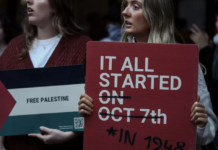
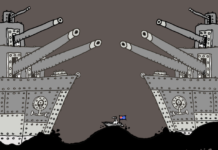

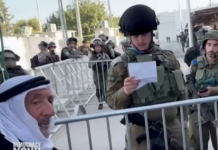
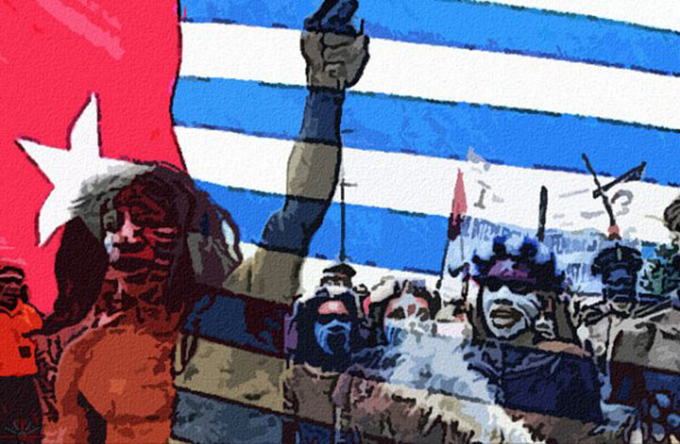

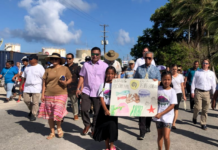




















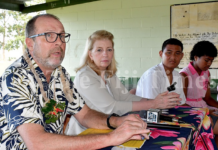
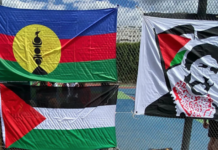
















Good book and a good review but unless the mainstream media and the international community expose the atrocities and human rights abuses in West Papua I’m afraid their struggle for independence will mean more lives will still be sacrificed.
Dear David,
Thanks very much for sharing this marvelous review. We’ll be sure to share online when it goes live.
Best wishes,
Rachel
University of Queensland Press
Joe Collins
An excellent review of Jason Macleod’s new book on West Papua “Merdeka: Media and the case for Papuan civil resistance”. As David said “This is essential reading for journalists, civil society activists and policymakers concerned over West Papua”. The conflict in West Papua is one of the longest running conflicts in our region and mostly hidden to the outside world. However, thanks to the net the issue of West Papua is finally gaining international attention and particularly in our region. If it has been difficult to get the attention of the mainstream media on the issue, the exceptions have been the Pacific Media Centre and Radio New Zealand International who have been consistent in their reporting on the issue over the years.
In our region civil society organizations’ in the Pacific have committed to enthusiastically take up the fight for the people of West Papua. The issue is also being raised around the world by solidarity groups and individuals too numerous to mention. West Papua is back on the agenda at the Pacific Islands Forum (PIF) and hopefully Jakarta will accept a request from the PIF leaders for a fact-finding mission to West Papua. West Papua has been raised at the UN by various Pacific leaders and awareness throughout the Pacific has increased dramatically through the lobbying of governments in the region by West Papuan representatives, civil society organisations and church groups.
Much of this campaigning and in particular around the MSG is well documented in Jason’s book as are all the issues of concern in West Papua. Chapter 6 looks at Framework for nonviolent liberation. Can nonviolent strategies work? The Indonesian military thinks so. Elaine Pearson, deputy Asia director at Human Rights Watch quotes from an internal Indonesian military document. The documents show that the military believes it has more to fear from peaceful “political separatist” activity than from armed separatists. A 2007 Kopassus report states, “Current political activity in Papua is very dangerous compared to the activities of Papuan armed groups because their access already reaches abroad.”
Joe Collins
AWPA (Sydney)
Comments are closed.